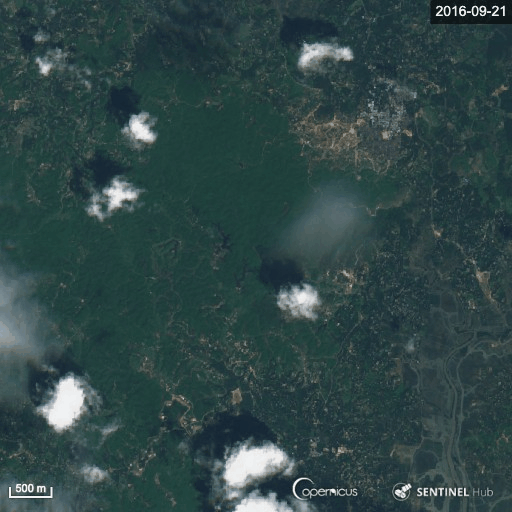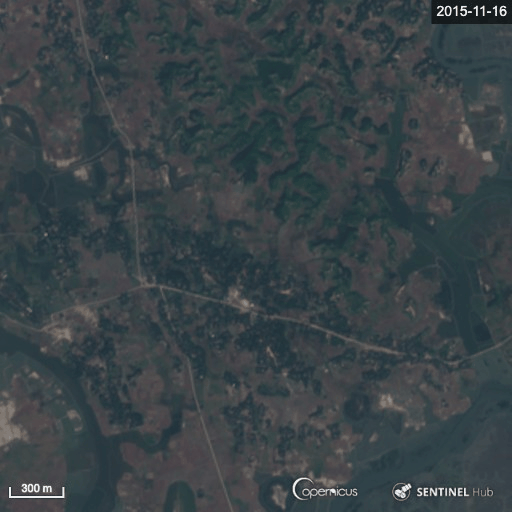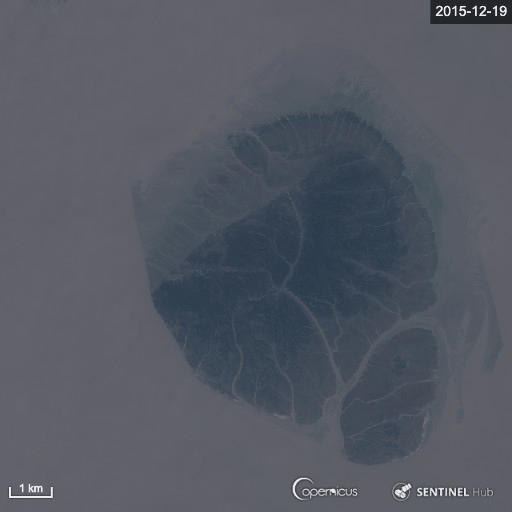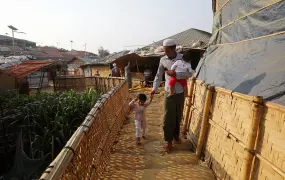The violent 2017 ouster of more than 700,000 Rohingya from Myanmar into Bangladesh captured the international spotlight, but the humanitarian crisis had been building for decades.
-
At a glance: The Rohingya crisis
- Nearly one million Rohingya from Myanmar live in Bangladesh's crowded refugee camps.
- Government restrictions on refugees and aid groups have escalated.
- Rohingya say camp conditions and safety have deteriorated as the crisis prolongs.
- In 2021, aid groups are asking for nearly $1 billion in donor funding. They say funding shortages have grown acute.
- A February 2021 military coup has further destabilised Myanmar.
In August 2017, Myanmar’s military launched a crackdown that pushed out hundreds of thousands of members of the minority Rohingya community from their homes in northern Rakhine State. Today, roughly 900,000 Rohingya live across the border in southern Bangladesh, in cramped refugee camps where basic needs often overwhelm stretched resources.
The crisis has shifted from a short-term response to a protracted emergency. Conditions in the camps have worsened as humanitarian services are scaled back during the coronavirus pandemic. In 2021, Rohingya faced massive fires and severe monsoon floods. Coronavirus cases have escalated in the camps, but vaccination campaigns didn’t begin until August – months after the national programme began.
Government restrictions on refugees and aid groups have grown, along with grievances among local communities on the margins of a massive aid operation.
The 2017 exodus was the culmination of decades of restrictive policies and persecution in Myanmar. Rohingya were stripped of their rights over generations, denied an identity, and driven from their homes.
In 2021, the prospects of a safe return grew even more uncertain following a February military coup in Myanmar. The coup triggered a nationwide civil disobedience movement, re-ignited conflicts in Myanmar’s border regions, and worsened existing humanitarian crises. Rights groups say the military committed new abuses against Myanmar’s population, and that these could amount to crimes against humanity.
Here’s an overview of the Rohingya refugee crisis and a timeline of what led to it. A selection of our recent and archival reporting is available below.
Who are the Rohingya?
The Rohingya are a mostly Muslim minority in western Myanmar’s Rakhine State. Rohingya say they are native to the area, but in Myanmar they were often viewed as illegal immigrants from neighbouring Bangladesh.
Read more → Identity and belonging in a card: How tattered Rohingya IDs trace a trail toward statelessness
Myanmar’s pre-coup government did not consider the Rohingya to be one of the country’s 135 officially recognised ethnic groups. Over decades, government policies stripped Rohingya of citizenship and enforced an apartheid-like system where they were isolated and marginalised.
How did the current crisis unfold?
In October 2016, a group of Rohingya fighters calling itself the Arakan Rohingya Salvation Army, or ARSA, staged attacks on border posts in northern Rakhine State, killing nine border officers and four soldiers. Myanmar’s military launched a crackdown, and 87,000 Rohingya civilians fled to Bangladesh over the next year.
A month before the initial ARSA attacks, Myanmar’s de facto leader, Aung San Suu Kyi, had set up an advisory commission chaired by former UN secretary-general Kofi Annan to recommend a path forward in Rakhine and ease tensions between the Rohingya and ethnic Rakhine communities. The Rakhine, also known as Arakanese, say their community is marginalised within Myanmar’s political system, which is traditionally dominated by the majority Bamar population.
On 24 August 2017, the commission issued its final report, which included recommendations to improve development in the region and tackle questions of citizenship for the Rohingya. Within hours, ARSA fighters again attacked border security posts.
Read more → The roots and risks of Myanmar’s new Rohingya insurgency
Myanmar’s military swept through the townships of northern Rakhine, razing villages and driving away civilians. Hundreds of thousands of Rohingya fled to Bangladesh in the ensuing weeks. They brought with them stories of burnt villages, rape, and killings at the hands of Myanmar’s military and militias. The refugee settlements of southern Bangladesh now have a population of roughly 900,000 people, including previous generations of refugees.
What has the international community said?
Multiple UN officials, rights investigators, and aid groups working in the refugee camps say there is evidence of brutal levels of violence against the Rohingya and the scorched-earth clearance of their villages in northern Rakhine State.
A UN-mandated fact-finding mission on Myanmar says abuses and rights violations in Rakhine “undoubtedly amount to the gravest crimes under international law”; the rights probe called for Myanmar’s top generals to be investigated and prosecuted for genocide, crimes against humanity, and war crimes.
The UN’s top rights official called the military purge a “textbook case of ethnic cleansing”. Médecins Sans Frontières estimated at least 6,700 Rohingya were killed in the days after military operations began in August 2017.
Rights groups say there’s evidence that Myanmar security forces were preparing to strike weeks and months before the August 2017 attacks. The evidence included disarming Rohingya civilians, arming non-Rohingya, and increasing troop levels in the area.
What has Myanmar said?
After the refugee exodus, Myanmar's government denied almost all allegations of violence against the Rohingya. It said the August 2017 military crackdown was a direct response to the attacks by ARSA militants.
Myanmar’s security forces admitted to the September 2017 killings of 10 Rohingya men in Inn Din village – a massacre exposed by a media investigation.
The government blocked international investigators from probing rights violations on Myanmar soil. This included barring entry to the UN-mandated fact-finding mission and the UN’s special rapporteurs for the country.
In 2019, Suu Kyi defended Myanmar against accusations of genocide at the International Court of Justice.
The February 2021 military coup may have shifted public perceptions of international justice, and of the Rohingya and other ethnic groups who have lived through years of discrimination and conflicts. Violent military crackdowns – once concentrated in remote border regions – are now directed at a broad section of Myanmar society opposed to the coup.
In August 2021, the National Unity Government (NUG), the shadow government that includes elected officials ousted in the coup, indicated it would accept the jurisdiction of the International Criminal Court. Earlier, officials said the NUG would “actively seek justice and accountability”, and pledged to repeal or amend citizenship laws that have excluded most Rohingya.
Suu Kyi’s government had previously rejected ICC jurisdiction and resisted calls to repeal the citizenship laws.
What is the situation in Bangladesh’s refugee camps?
The swollen refugee camps of southern Bangladesh now have the population of a large city but little of the basic infrastructure.
The dimensions of the response have changed as the months and years pass: medical operations focused on saving lives in 2017 must now also think of everyday illnesses and healthcare needs; a generation of young Rohingya have spent another year without formal schooling or ways to earn a living; women (and men) reported sexual violence at the hands of Myanmar's military, but today the violence happens within the cramped confines of the camps.
The coronavirus pandemic has magnified the problems and aid shortfalls. Through long stretches of the pandemic, Bangladesh's government limited all but essential services and restricted aid access to the camps. Gender-based violence rose, and already-minimal services for women and girls became even more rare.
Crimes largely go unpunished because there is no formal justice system in the camps. With inadequate security and little accountability, Rohingya say a climate of fear has spread. They report being harassed, kidnapped, attacked, or extorted by people they believe are affiliated with militant groups or gangs. Refugees and aid groups say the violence and threats have reached a crisis point.
The majority of Rohingya refugees live in camps with population densities of less than 15 square metres per person – far below the minimum international guidelines for refugee camps (30 to 45 square metres per person). The risk of disease outbreaks is high in such crowded conditions, aid groups say.
Read more → As violence soars in refugee camps, Rohingya women speak up
Rohingya refugees live in fragile shelters in the middle of floodplains and on landslide-prone hillsides. Aid groups say seasonal monsoon floods threaten large parts of the camps, which are also poorly prepared for powerful cyclones that typically peak along coastal Bangladesh in May and October. The government has constructed barbed-wire fences around parts of the camps. Rohingya say these fences made it difficult for people to escape a March 2021 fire that destroyed thousands of tent homes.
Global funding for the Rohingya response appears to be waning. A UN-backed humanitarian appeal asked for nearly $1 billion in 2021. It was one third funded in late August – about half of previous appeals, by proportion and dollar value.

What’s happening in Rakhine State?
The 2021 military coup in Myanmar has worsened the humanitarian situation for people from all communities. In Rakhine State, local humanitarian groups report food shortages and aid access restrictions.
The UN estimates that 470,000 non-displaced Rohingya live in Rakhine State. Aid groups say they continue to have extremely limited access to northern Rakhine State – the flashpoint of 2017’s military purge.
Rohingya still in northern Rakhine face heavy restrictions on working, going to school, and accessing healthcare.
Additionally, some 125,000 Rohingya live in barricaded camps in central Rakhine State. The government created these camps following clashes between Rohingya and Rakhine communities in 2012. Rohingya there face severe restrictions and depend on aid groups for basic services.
A conflict between the military and the Arakan Army, an ethnic Rakhine or Arakanese armed group, became one of Myanmar’s fiercest through 2020 before settling into a tentative ceasefire late in the year.

What’s next?
Rights groups draw a direct line between the February 2021 military coup, and impunity for atrocity crimes against the Rohingya as well as other ethnic groups through decades of conflicts.
Many have called on the UN Security Council to refer Myanmar to the International Criminal Court to investigate allegations of committing atrocity crimes. The UN body has not done so.
There are at least three parallel attempts, in three separate courts, to pursue accountability. The ICC judges have authorised an investigation hinged on one aspect: the alleged deportation of the Rohingya, which is a crime against humanity under international law.
Separately, the West African nation of The Gambia filed a lawsuit at the International Court of Justice asking the UN's highest court to hold Myanmar accountable for "state-sponsored genocide". In an emergency injunction granted in January 2020, the court ordered Myanmar to “take all measures within its power” to protect the Rohingya.
And in a third legal challenge, a Rohingya rights group launched a case calling on courts in Argentina to prosecute military and civilian officials under the concept of universal jurisdiction, which pushes for domestic courts to investigate international crimes. In August 2021, Rohingya women spoke remotely at a hearing held to determine whether an Argentinian court would pursue the case.
Read more → Life at disaster’s edge: What it means to start over – again and again
Bangladesh and Myanmar have pledged to begin the repatriation of Rohingya refugees, but multiple deadlines have come and gone with no movement. The UN, rights groups, and refugees themselves say Rakhine State is not yet safe for Rohingya to return – especially after the February 2021 coup.

With no resolution in sight in Myanmar and bleak prospects in Bangladesh, Rohingya are using once-dormant smuggling routes to travel to countries like Malaysia – including a rising proportion of women and children.
These journeys across the Bay of Bengal have grown deadlier amid coronavirus border closures and boat pushbacks, according to the UN’s refugee agency. At least eight percent of the 2,400 refugees known to have risked the voyage in 2020 died at sea, the agency estimated.
Bangladesh has transferred some 20,000 Rohingya refugees to Bhasan Char, a flood-prone island that critics call an “island jail” with inadequate healthcare and services. NGOs have reported outbreaks of acute watery diarrhoea and the presence of cholera.
The government has imposed more restrictions on the Rohingya as the crisis continues. Local community tensions have also risen. Aid groups report a rise in anti-Rohingya hate speech and racism.
Local NGOs and civil society groups are pushing for a greater role in leading the response, warning that international donor funding will dwindle over the long term.
And Rohingya refugees themselves have had little opportunity to participate in decisions that affect their futures – both in Bangladesh’s camps and when it comes to the possibility of returning to Myanmar.




















